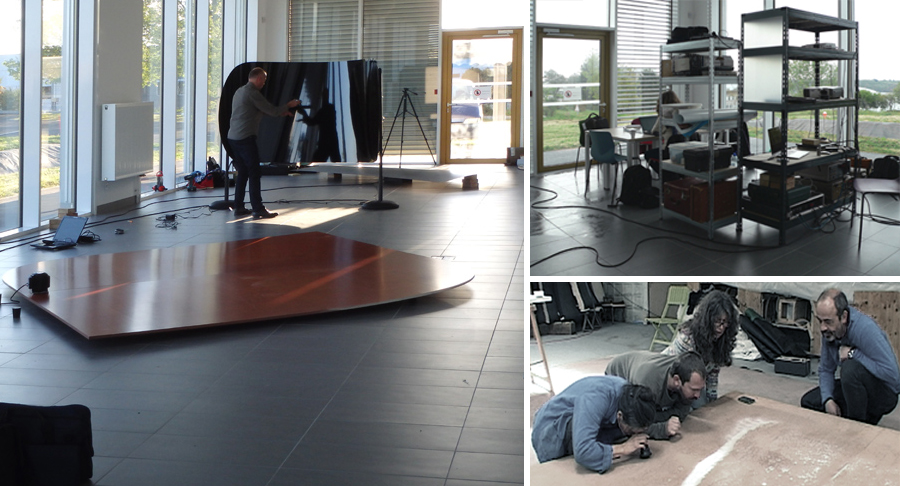
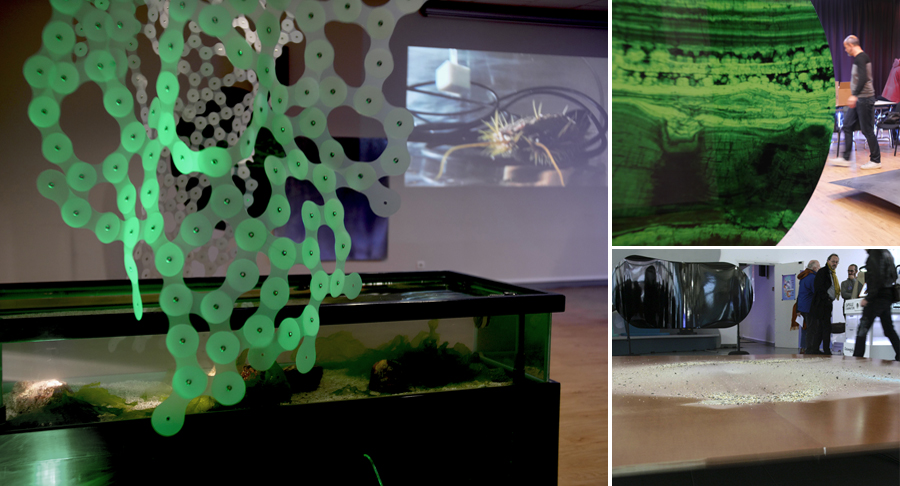
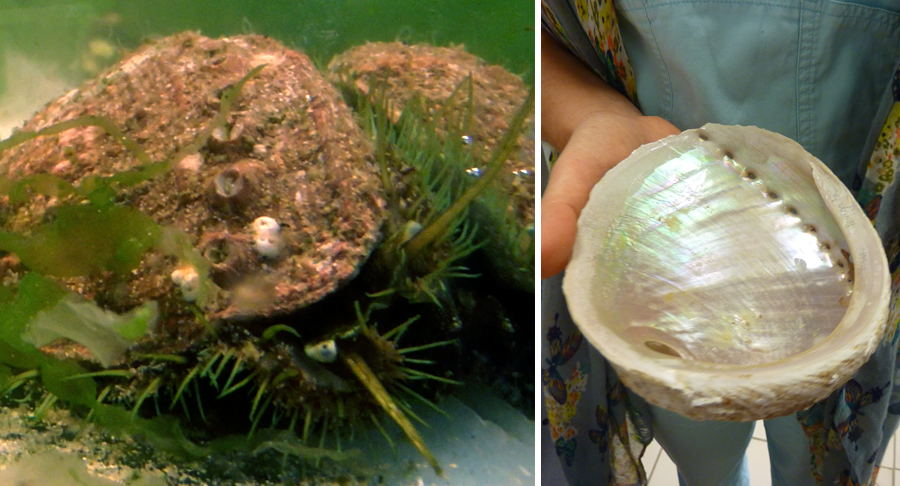
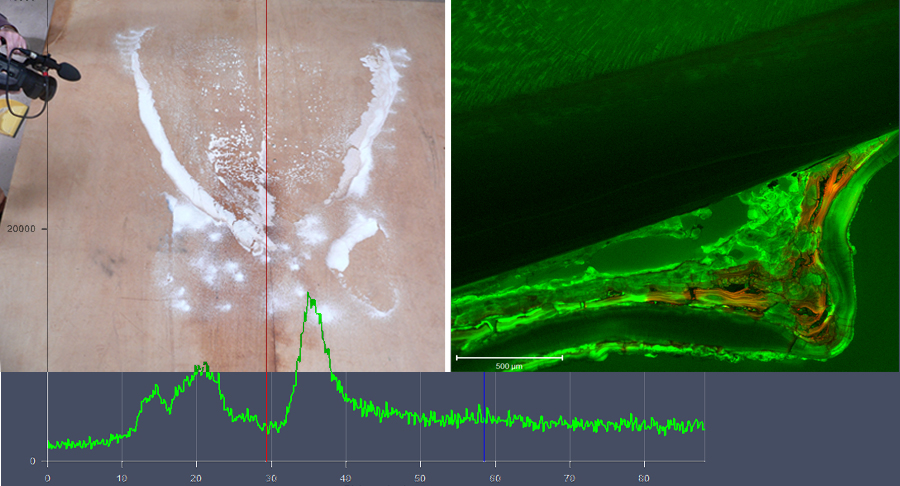
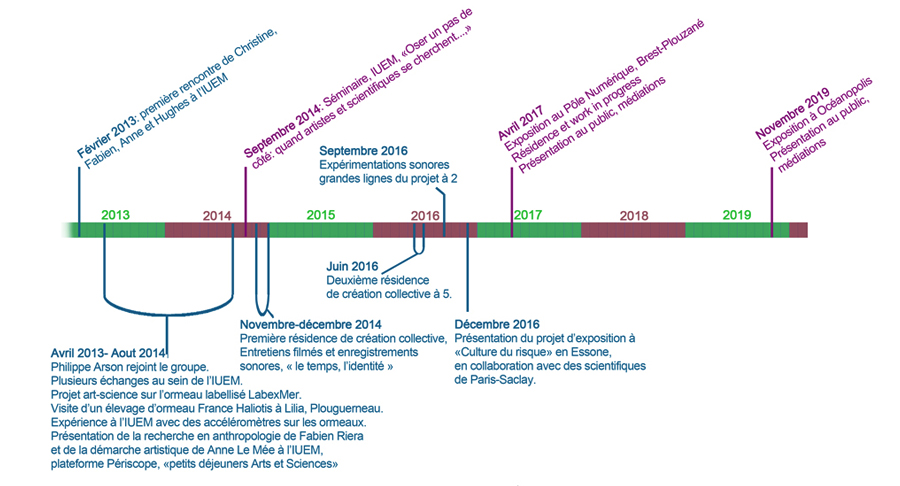
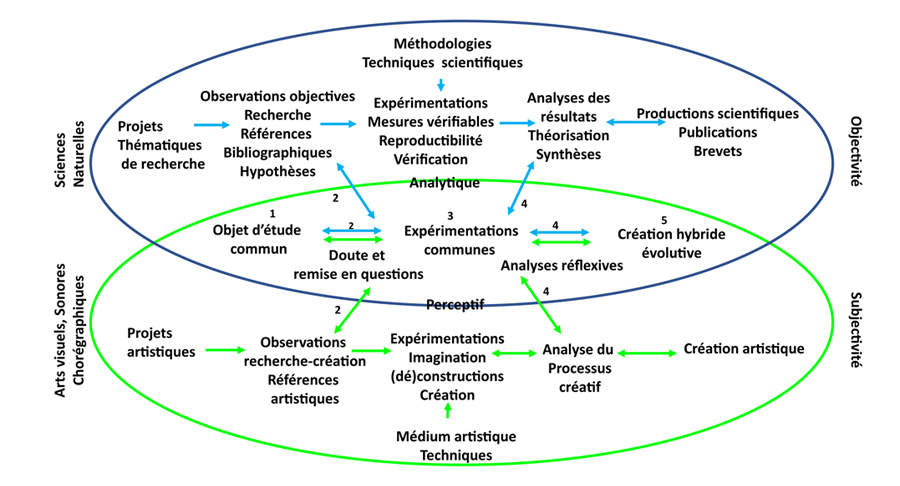
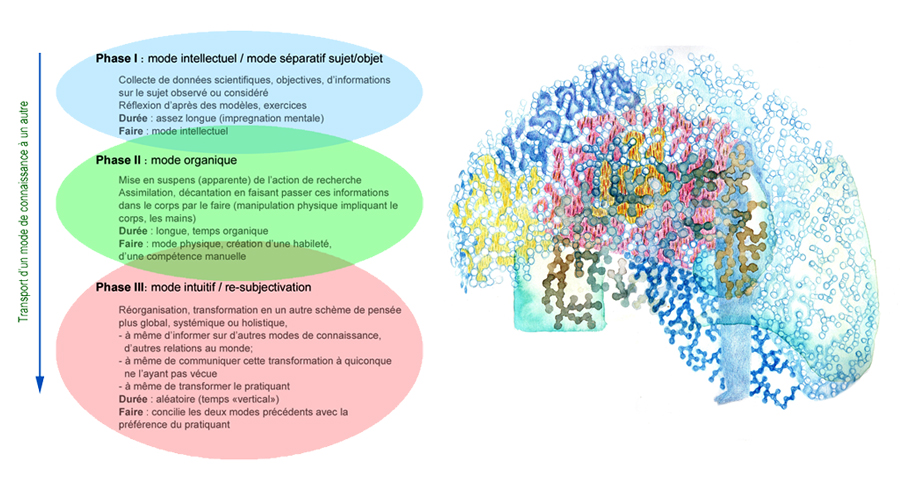







The Abalone collective's arts & sciences project aims to merge artistic and scientific approaches equally. The production of works is not the primary objective; it is rather a matter of thinking together, of implementing another form of thinking in the context of the Anthropocene.
A marine mollusk, the abalone, is studied by biologists from the European Institute of Marine Studies. Threatened by global warming, human activities and pollution, the abalone is today experiencing disease and high mortality. Inspired by scientific research but also by the practice of the abalone "umwelt" (walks in the intertidal zone, observation-listening to the animal in the workshop, etc.) the collective explores and experiments its perceptual universe while confronting each person’s representations.
From this long-term approach emerged a vision of the world of abalone and
the forms of its sensitive otherness.
A vibrating plate onto which sand and particles are thrown reveals patterns
that closely resemble sections of abalone shell.
A sculpture, Black Ear, destabilizes the sense of sight and plunges into a
space of kinesthetic landmarks; the abalone gastropod (it walks on/with its
belly) has a very proprioceptive relationship with its environment; it is
particularly sensitive to vibrations as well as olfactory traces.
A curtain, like electrodes capturing subtle signals inside the abalone aquarium
and around where the humans are, connects the two beings through a subjective
and reciprocal listening to the heartbeats (in reference to an experiment
carried out at EIMS with accelerometers placed on the shell to measure the
heart rate of the abalone).
These achievements question both the conditioning that governs perceptions
and reasoning as well as the approach to the disease itself and its origin.
What is the impact of noise pollution in the abalone environment?
What is the link between shell formation and sound? Today, noise pollution
and particularly low frequencies are invading the biotope of abalone and other
marine animals...
The hybridization of our modes of thinking and research has opened the imagination
to other scientific hypotheses.
An exploration of the idiosyncrasy of the abalone reduces the distance with
the animal and its living environment.
These experiential forms and attitudes implement a common search and wonder
that arises in both art and science.
The exhibition at the Digital Pole in Brest Iroise summarizes more than three
years of research by the Abalone collective.
The exhibition in Brest-Océanopolis shows the following developments
during the RESSAC Arts and Sciences Festival.
The Abalone collective's project was presented at Arts-Sciences conferences
(Ressac Festival in Brest, University of Western Brittany, Natural History
Museum of Paris, etc.)
Long intertwined in human practices, the paths of what we should call
today the sciences and the arts began to diverge in the Age of Enlightenment
until they became hermetic universes with sometimes totally irreconcilable
world views.
The growing complexity and urgency of current societal and environmental issues
push us to go beyond the thought routines of our hyper-specialized societies
to invent new relationships with the world. Thus, for several decades, connections
between disciplines have been made and experimented within the major areas
of understanding and construction of knowledge, but a long way still remains
to be covered to glimpse real syncretisms between arts and sciences.
Indeed, without omitting the numerous attempts at rapprochement and cross-fertilization
between actors in these fields, it is clear that marriages are often unequal,
with one serving as a pretext or inspiration for the other.
Our approach is therefore intended to be different. Starting from the founding
principle of an egalitarian meeting between actors from several disciplines
of the arts (plastic, sound, visual, bodily) and sciences (of nature and society)
we seek to explore and experiment with the dynamics of transdisciplinary creation
. Our challenge is, through the discovery and mutual absorption of our mental,
sensitive and temporal universes, to arrive at a true poetry that is neither
our own nor fundamentally foreign. The risk of the approach lies there, because
it engages us in individual and collective journeys which endanger our personal
and professional identities while asking us to affirm what constitutes their
original foundation. In itself, the work of this encounter is both its process
and its outcome as a shareable object. »
Fabien Riera
This project benefited from the European fund “LABEX Sea sciences & society”
The Abalone collective is made up of:
Christine Paillard (biologist - LEMAR*/IUEM**/ CNRS)
Fabien Riera (Anthropologist -LEMAR/IUEM/UBO*** Brest)
Philippe Arson (Filmmaker - CNRS Paris)
Hughes Germain, sound artist, Brest
Anne Le Mée, visual artist, Plérin.
LEMAR (Marine Environmental Sciences Laboratory), Plouzané (29)
**IUEM (European Institute of Marine Studies), Plouzané (29)
***UBO (University of Western Brittany), Brest (29)
CNRS: National Organization for Scientific Research